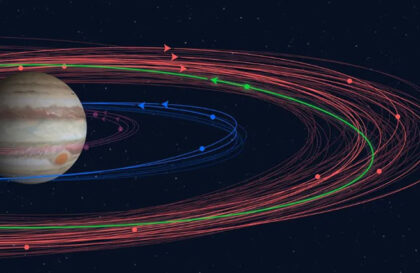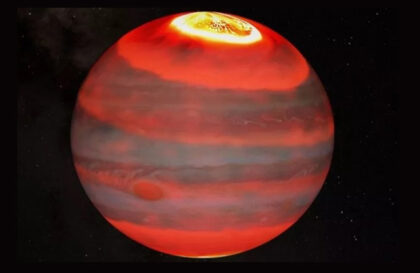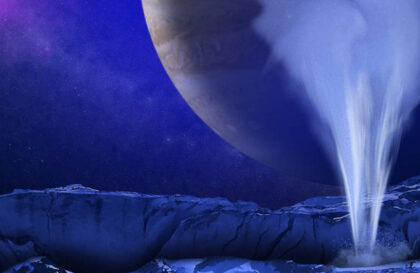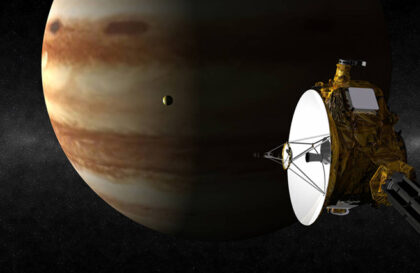Jupiter, which is far from the Sun, would logically be cold, but its upper atmosphere is much hotter than expected. Instead of the expected temperature of about minus 100 degrees Fahrenheit or minus 73 degrees Celsius, the temperature in these layers reaches about 800 degrees Fahrenheit or 426 degrees Celsius. This mysterious extra heat, called the “energy crisis”, has remained unexplained for 50 years.
An international team of scientists collected data from three observatories—NASA’s Juno spacecraft, the Japan Aerospace Exploration Agency’s (JAXA) Hisaki satellite, and the Keck Observatory on Maunakea Island in Hawaii—and announced the discovery of the source of the high-temperature Jupiter’s upper atmosphere.
Jupiter’s aurora, the most intense in the solar system, appears to be responsible for heating the planet’s atmosphere. This aurora, caused by electrically charged particles moving in the planet’s magnetic field and interacting with the atmosphere, results in enormous heating of Jupiter’s upper atmosphere. The main source of charged particles is the material erupted by the volcanoes of the moon Io.
Using the Keck II telescope and the NIRSPEC spectrometer, the team detected heat from H3+ ions in Jupiter’s atmosphere at different points in April 2016 and January 2017. They took more than ten thousand temperature measurements across the planet, resulting in more detailed temperature maps than before. Heat in Jupiter’s upper atmosphere appeared to be more widely distributed and gradually decreased closer to the equator, in contrast to the expected heat retention only in the polar regions.
The researchers also discovered a strange, localized heating region far from the aurora—a long streak of heating, unlike anything we’ve seen before. Tom Stallard, co-author of the paper from the University of Leicester, US, is convinced that this is a rolling heat wave flowing equatorward from the aurora.
Research using JAXA’s Hisaki satellite, which observes Jupiter’s magnetic field, has suggested that the strong auroras on Jupiter observed during temperature measurements by the Keck II telescope could be caused by solar wind pressure on the planet. This solar wind, carrying its magnetic field, compressed Jupiter’s magnetic field, which likely increased the aurora.
The Juno satellite orbiting Jupiter provided precise data on the location of the aurora on the planet, which was impossible to determine using heat maps. These data allowed us to better understand the characteristics of the aurora and its distribution on Jupiter.
Image credit:
https://www.nasa.gov






